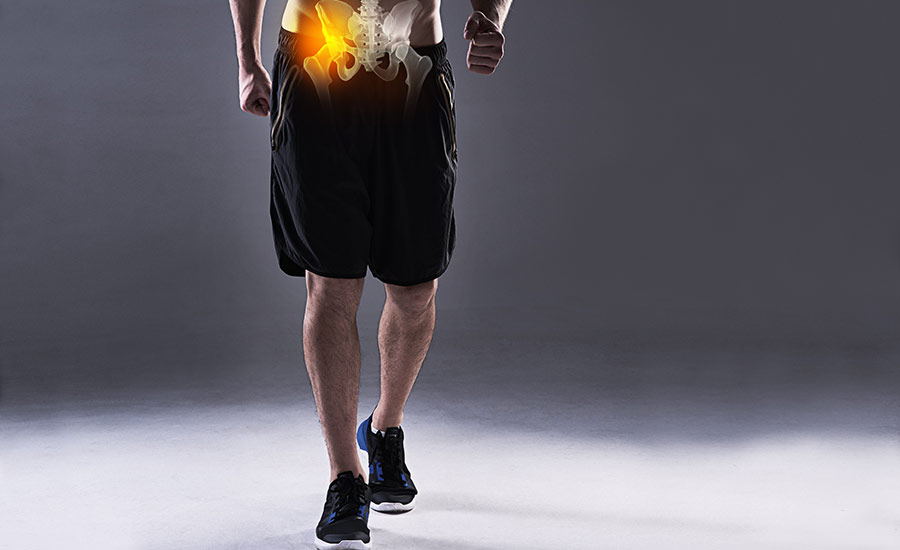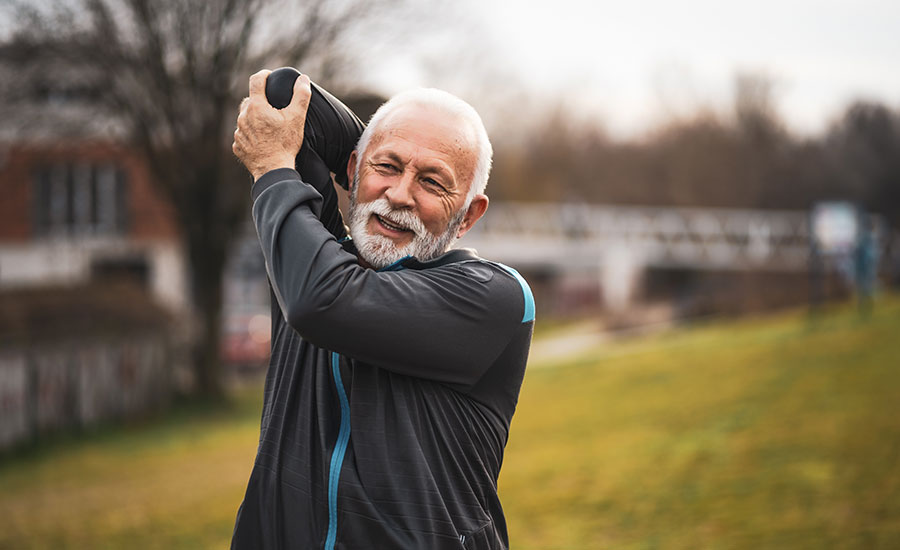
What Is Knee Repair Surgery?

Meet Our Knee Repair & Preservation Specialists
Find a Specialist Near You
Get the care you deserve close to home at one of our New Jersey or New York Locations.
About Knee Repair & Preservation

Who Might Need Knee Repair Surgery?
The need for knee repair surgery can arise from a variety of factors, including injury, disease, and normal wear and tear on the joint.
There are several knee repair surgery procedures that our team at OrthoEast might recommend if your condition is severe and knee preservation techniques cannot provide lasting relief.
The most common conditions that require knee repair surgery are:
- Osteoarthritis
- Arthritis
- Avascular bone necrosis
- Meniscus tears
- Cruciate ligament ruptures
- Runner’s knee
- Jumper’s knee
- Leg malalignment
Based on our assessment of your condition through a variety of tests such as X-rays, an MRI, a CT scan or a bone scan, our specialists at OrthoEast will recommend the treatment that’s right for you, whether knee repair surgery or knee preservation.
Our knee repair specialists at OrthoEast include Dr. Casey Pierce, Dr. Thomas A. Novack, Dr. Anthony Festa and Dr. William Matarase.
Our board-certified physicians provide compassionate care to each and every patient, which allows us to guide you through your procedure with enhanced comfort and confidence.
Conditions That Might Require Knee Repair Surgery
Not all knee conditions require knee repair surgery, as some might only require knee preservation techniques such as physical therapy or medication, but some conditions that could require knee repair arthroscopy surgery are:
- Osteoarthritis: Osteoarthritis is a degenerative joint disease that commonly affects the knee joint. It is caused by the breakdown of cartilage in the joint, which leads to pain, stiffness, and reduced mobility. Knee repair surgery may be recommended if you’re suffering from severe osteoarthritis and have not found relief from other treatments.
- Arthritis: Other forms of arthritis, such as rheumatoid arthritis and psoriatic arthritis, can also lead to knee damage and the need for repair surgery. These types of arthritis cause inflammation in the joint, which can lead to cartilage damage and joint pain.
- Avascular bone necrosis: Avascular bone necrosis is a condition in which the bone tissue in the knee joint dies due to a lack of blood supply. This can cause pain, swelling, and reduced mobility, and may require surgical intervention to repair the damage.
- Meniscus tears: The meniscus is a piece of cartilage in the knee joint that helps to absorb shock and distribute weight. A meniscus tear can occur due to sudden trauma or as a result of normal wear and tear on the joint.
- Cruciate ligament ruptures: The cruciate ligaments are located inside the knee joint and help to stabilize the joint during movement. A rupture of these ligaments can cause instability, pain, and reduced mobility.
- Runner’s knee: Runner’s knee is a condition in which the cartilage on the underside of the kneecap becomes irritated or damaged. It is a common injury in runners and athletes who engage in activities that involve repetitive bending of the knee.
- Jumpers’ knee: Jumpers’ knee is a condition in which the patellar tendon, which connects the kneecap to the shinbone, becomes inflamed and painful. It is a common injury in athletes who participate in jumping sports, such as basketball and volleyball.
- Leg malalignment: Leg malalignment occurs when the bones of the leg are not properly aligned, which can lead to uneven wear and tear on the knee joint.
Knee Repair Surgery at OrthoEast
The knee repair surgery that’s right for you depends on your medical history and current condition. The knee repair procedures that our physicians at OrthoEast perform include:
Arthroscopic surgery is a minimally invasive surgical technique in which we insert a small camera into the knee joint. This allows us to visualize the knee joint and perform repairs without the need for large incisions.
Knee arthroscopy surgery can be used to repair cartilage damage, remove loose bodies, and repair ligament injuries.
We may recommend total knee replacement surgery if you suffer from severe knee damage caused by osteoarthritis, rheumatoid arthritis, or another degenerative conditions.
When performing this major surgical procedure, we remove the damaged or diseased part of the knee joint and replace it with an artificial joint made of metal, plastic, or ceramic materials. The artificial joint is designed to mimic the natural movement of the knee and improve its function.
In a partial knee replacement surgery, the damaged part of the knee joint is the only part that is replaced.
This is a less invasive option compared to a full knee replacement surgery and it can provide relief for those with localized knee damage.
A knee osteotomy is a surgical procedure in which the bones in the knee joint are reshaped to help shift the weight-bearing load from the damaged part of the knee to a healthier area.
If you have early-stage osteoarthritis or another type of knee damage, such as a torn meniscus, that affects only one side of the knee joint, we may recommend a knee osteotomy.
The procedure can be performed on the tibia (shinbone) or the femur (thighbone), depending on the location of the damage.
We start the procedure by making a small incision in the knee, cutting the bone, and then realigning the bones to the correct position before securing them in place with plates, screws, or other hardware.
If you have a ligament tear or rupture, ligament reconstruction surgery may be the best course of action. During this procedure, we take a graft from another part of your body or from a donor and use ir reconstruct the damaged ligament.
We make small incisions around the knee joint and use a camera and surgical instruments to remove the damaged ligament and replace it with the graft.
Non-Surgical Knee Preservation Techniques
While surgery may be necessary for certain knee conditions, you may also be able to manage pain through non-surgical preservation techniques.
These techniques aim to preserve knee health without the need for invasive procedures. The most common non-surgical knee preservation techniques include:
Physical therapy is often recommended for those with knee injuries or conditions. A physical therapist can design a personalized exercise program that can help improve knee function and range of motion.
These exercises can also help strengthen the muscles around the knee joint, which can help provide support and reduce pain.
Weight management and lifestyle changes can also play a significant role in keeping your knee healthy. Being overweight can put excess stress on your knee joint, leading to more wear and tear.
Losing weight and maintaining a healthy weight can help you reduce the risk of knee damage and the need for knee surgery. Lifestyle changes such as quitting smoking and reducing alcohol consumption can also have a positive impact on your knee health.
Non-steroidal anti-inflammatory drugs (NSAIDs) are the go-to solution for inflammation and pain in your knee joint.
While over-the-counter options like ibuprofen and naproxen can offer some relief, prescription-strength NSAIDs may be necessary for tackling more severe cases of pain and inflammation.
Whatever your needs, our orthopedic specialists can help you find the right NSAID treatment to get you feeling your best.
Corticosteroid injections can also be used to reduce inflammation and pain in your knee joint. These injections are typically given directly into your knee joint and can provide quick relief.
The use of corticosteroid injections can show improvement, but only an improvement that is short-lived, which usually lasts one to four weeks.
Repeated use of corticosteroids can lead to joint damage and tissue atrophy, so they should only be used in consultation with our professional team.
Viscosupplementation injections involve injecting hyaluronic acid into your knee joint. Hyaluronic acid is a substance that is naturally present in the synovial fluid in the knee joint.
Injections of hyaluronic acid can help improve joint lubrication and reduce inflammation and pain.
Platelet-rich plasma injections involve injecting a concentrated solution of your own blood platelets into the knee joint.
Platelets contain growth factors that can help promote tissue healing and regeneration. PRP injections can help reduce pain and inflammation and may also help promote tissue healing in the knee joint.
Knee braces or supports can also be used to help support your knee joint and reduce pain. These devices can help you provide stability and reduce stress on the knee joint.
They can also be used to help protect the knee joint during physical activity.
How To Prepare for Knee Repair Surgery
Before you undergo any type of knee repair surgery, our team of specialists at OrthoEast will provide you with detailed information on how to prepare for your procedure. If you smoke, you’ll need to stop smoking before the surgery, as it can prolong the time of your healing.
Generally, you should avoid eating or drinking anything after midnight the night before your surgery.
It’s important to arrange for transportation to and from the hospital on the day of the surgery and we advise you to be in contact with someone who is able to assist you while you recover at home.
We’ll cover all you need to know and answer all of your questions regarding pre-op, surgery and recovery, so you feel as prepared and comfortable as possible with your procedure.
How Long Does Knee Repair Surgery Take?
Knee repair surgery can take anywhere from 30 minutes to several hours, depending on the specific procedure being performed.
For example, arthroscopic surgery usually takes between 30 minutes to one hour, while knee replacement surgery can last several hours.
Our OrthoEast team will give you a time estimate for your surgery based on your condition and the type of surgery you are undergoing.
What To Expect After Knee Repair Surgery
After knee repair surgery, you will spend a few days in the hospital, during which time you will receive pain management medication and start walking to regain mobility in your knee.
We provide specific instructions to help you care for the incision site and manage your pain at home following your surgery. You may need to use crutches or a walker to move around for several weeks, depending on what type of knee repair surgery you have.
It’s important to attend all follow-up appointments with our OrthoEast team so we can monitor your progress and ensure that your knee is healing properly.
We’ll also advise you on when you could get back to normal activities and keep an eye out for any unusual symptoms such as swelling, fever, or redness around the incision site.
Knee Repair Surgery Recovery Time
Recovery time after knee repair surgery can take anywhere from a few days to several months, depending on the type of procedure performed, the extent of the damage, and your overall health.
Knee arthroscopy surgery may require only a few days of recovery time, while knee replacement surgery may require several months before you can resume normal activities.
During the recovery period, you will need to participate in physical therapy and follow our team’s instructions for caring for your knee. It is important to be patient and to avoid overexerting your knee during the healing process to avoid further damage.
Schedule a Consultation With Our Knee Repair Surgery Specialists at OrthoEast
If you have concerns or anxiety about undergoing surgery, you’re certainly not alone — surgery can be a scary topic! That’s why our compassionate specialists at OrthoEast are here to help you feel comfortable and confident in your decision about the knee repair surgery that’s right for you and your condition.
Don’t let knee pain limit your quality of life. Find us at one of our New Jersey or New York locations:
- Wayne, NJ
- Morristown, NJ
- Clifton, NJ
- Linden, NJ
- Wall Township, NJ
- New York, NY











